Sewing machines are invaluable tools for both beginners and experienced seamstresses, but threading that tiny needle eye can be a frustrating challenge.
Thankfully, most modern sewing machines come equipped with a handy tool known as a needle threader.
In this guide, we’ll walk you through the step-by-step process of using a needle threader on your sewing machine, making your sewing projects a breeze.
Whether you’re a sewing enthusiast or just getting started, understanding how to use a needle threader on a sewing machine can save you time and frustration.
We’ll cover everything from locating the needle threader on your machine to the precise steps required to thread your needle effortlessly.
By the end of this tutorial, you’ll have the confidence to tackle any sewing project with ease, ensuring that your thread is perfectly threaded and ready to stitch. Let’s dive in.
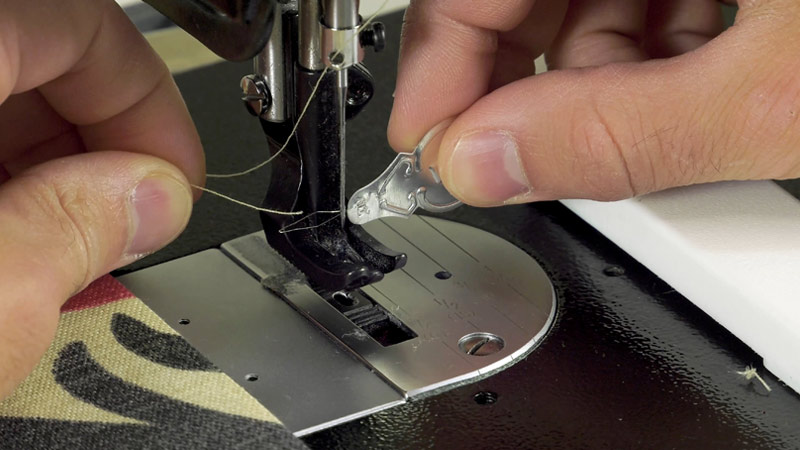
How to Use a Needle Threader on a Sewing Machine?
To use a needle threader on a sewing machine, follow these steps:
Prepare Your Sewing Machine
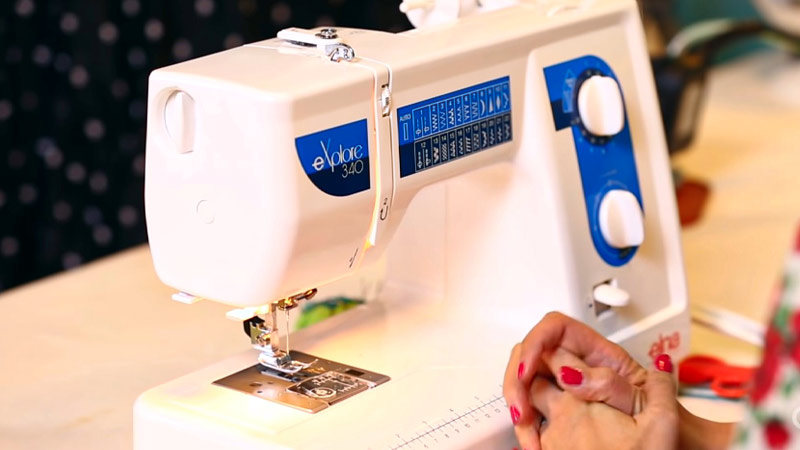
Make sure your sewing machine is turned off and unplugged for safety. Raise the presser foot and the needle to their highest positions.
Locate the Needle Threader

Many modern sewing machines come with an automatic needle threader, which is usually located near the needle area. It’s a small, thin wire or hook.
Thread Your Sewing Machine
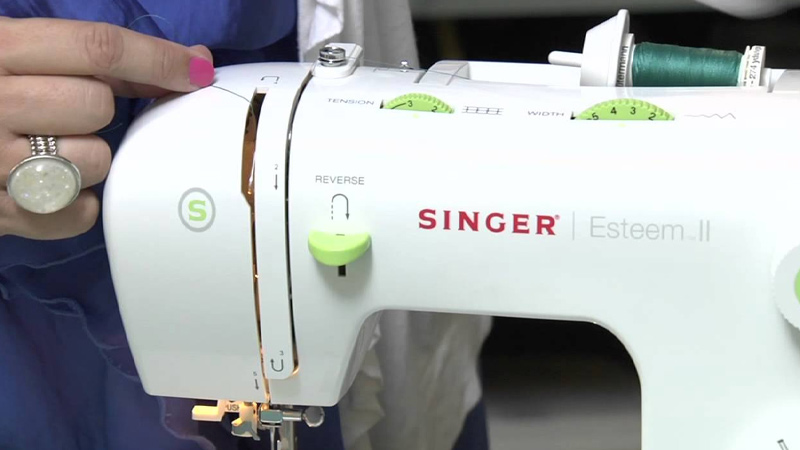
Place a spool of thread on the spool pin and follow the threading guide as per your machine’s manual to thread the upper thread through the machine properly.
Engage the Needle Threader
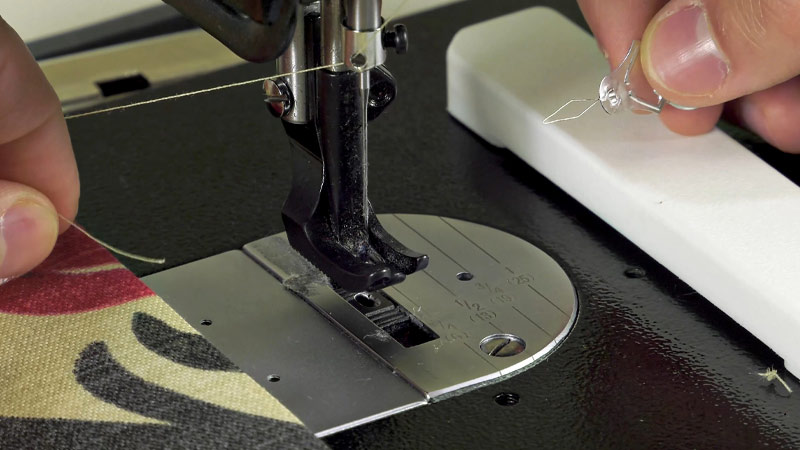
Lower the sewing machine’s presser foot to secure the upper thread. Move the needle to its highest position, either manually or using the machine’s controls.
Activate the needle threader by pulling it down or following your machine’s specific instructions to engage it.
Thread the Needle
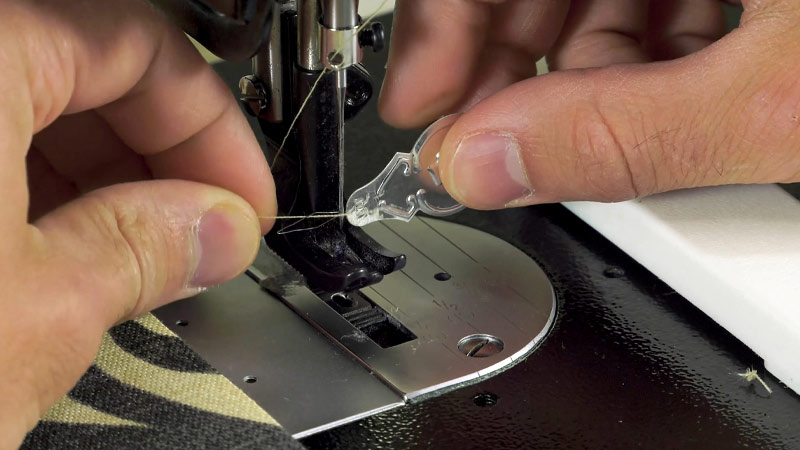
The needle threader should now be aligned with the eye of the needle. Insert the end of the thread through the threader’s hook or wire. Gently pull the threader back through the needle’s eye, and it will carry the thread with it.
Secure the Thread
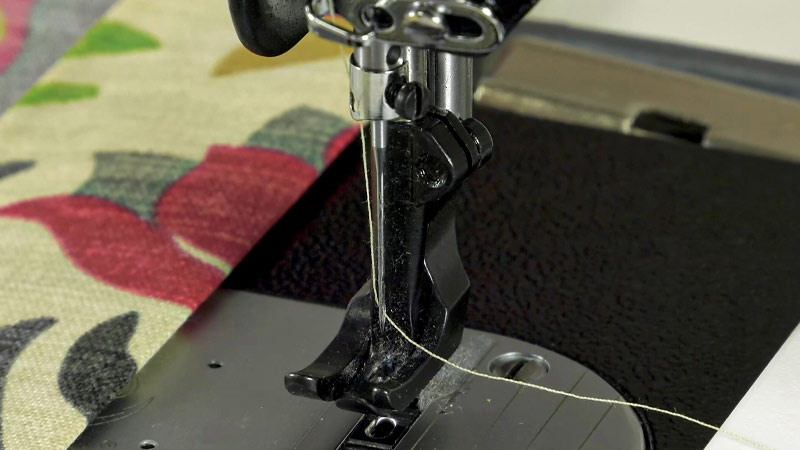
Once the thread has been pulled through the needle’s eye, release the threader and carefully pull the thread tail to ensure it’s securely threaded through the needle.
Trim Excess Thread
Trim any excess thread tail, leaving a few inches to prevent the thread from immediately pulling out of the needle. Lower the presser foot before you start sewing.
Test Your Machine
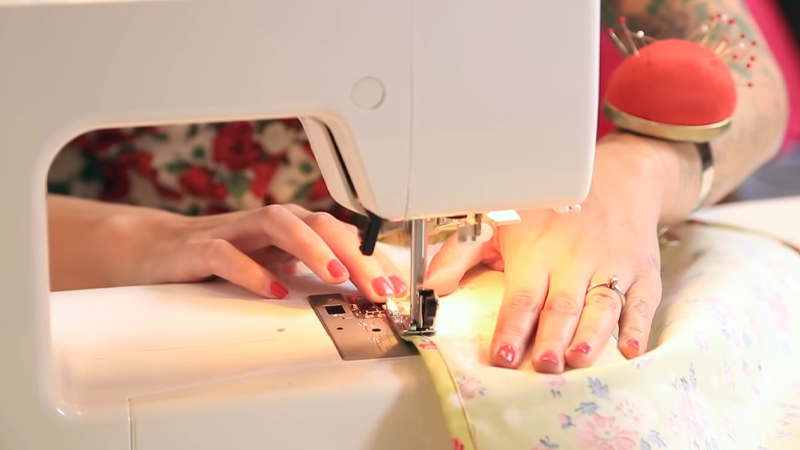
Do a test run on a piece of scrap fabric to ensure that the thread is feeding correctly through the needle.
Remember to consult your sewing machine’s manual for specific instructions and features, as different machines may have variations in their needle threader mechanisms.
With practice, using a needle threader can save you time and make threading your sewing machine much easier.
Why Use a Needle Threader on a Sewing Machine?
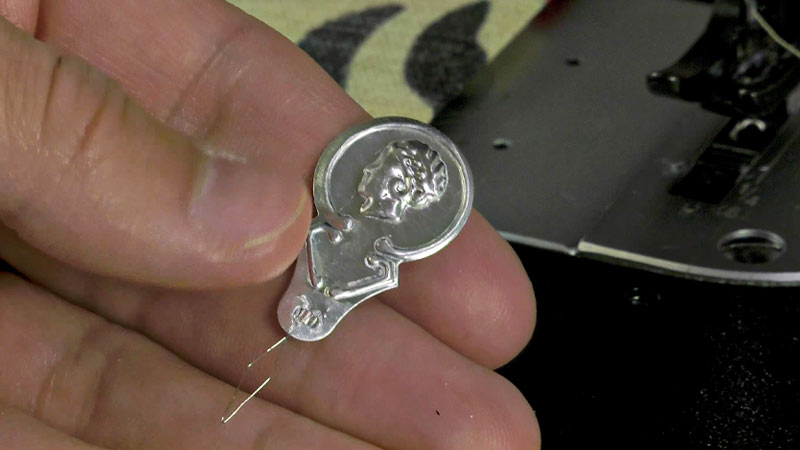
Using a needle threader on a sewing machine offers several benefits:
Time-Saving
Threading a sewing machine needle manually can be a delicate and time-consuming task, especially if you have limited dexterity or poor eyesight. A needle threader can significantly speed up the process.
Precision
Needle threaders are designed to guide the thread through the tiny eye of the needle accurately. This helps prevent threading errors and reduces frustration.
Reduced Eye Strain
For individuals with vision impairments or those working on intricate sewing projects, using a needle threader can reduce eye strain and make sewing more enjoyable.
Enhanced Efficiency
When sewing multiple items or working on large projects, such as quilting, using a needle threader ensures a consistent and secure thread placement, improving the overall quality of your stitching.
User-Friendly
Needle threaders are relatively simple to use, making sewing more accessible to beginners and those who may not have advanced sewing skills.
Less Waste
Manual threading attempts can result in wasted thread if the thread breaks or becomes frayed during the process. A needle threader can minimize such waste.
Convenience
Many modern sewing machines come equipped with automatic needle threaders, which are extremely convenient and user-friendly. They save you the hassle of using a separate hand-held needle threader.
Overall, a needle threader is a valuable tool that can make sewing more efficient, precise, and enjoyable, whether you’re a beginner or an experienced seamstress.
How to Correctly Use a Hand-Held Needle Threader?
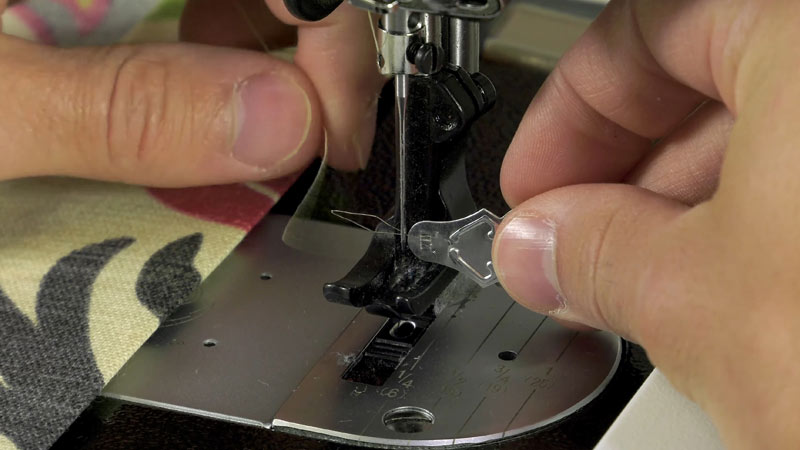
Using a hand-held needle threader is a handy skill for anyone who sews by hand. Follow these steps to correctly use a hand-held needle threader:
Gather Your Materials
You’ll need a hand-held needle threader and the thread you want to use. Choose the appropriate needle for your sewing project and ensure it’s securely attached to your thread.
Prepare the Threader
Hold the hand-held needle threader in one hand. It typically has a thin wire loop attached to a handle or a flat, folded metal piece.
Thread the Wire Loop
Pass the end of your thread through the wire loop on the needle threader. Make sure you have a few inches of thread extending beyond the loop.
Insert the Threader Through the Needle’s Eye
Take the threaded needle threader and insert it gently through the eye of the needle. Be careful not to force it; the wire loop should smoothly pass through the eye.
Thread the Needle
While holding the needle threader and the needle together, carefully pull the threader back through the needle’s eye.
As you do this, the thread will follow the threader through the eye of the needle.
Remove the Threader
Once the thread has passed through the needle’s eye, remove the needle threader from the needle. Gently pull the thread tail to ensure it’s fully threaded through the needle’s eye.
Trim Excess Thread
Trim any excess thread tail, leaving a few inches for sewing. Knot or secure the end of the thread to prevent it from pulling through the needle while sewing.
Using a hand-held needle threader can be especially helpful if you have difficulty threading needles manually due to poor eyesight or shaky hands.
It’s a simple tool that can make hand sewing more accessible and less frustrating.
Is There an Easy Way to Thread an Embroidery Needle?
Threading an embroidery needle can be a bit challenging due to the small eye of the needle and the thickness of the embroidery floss. Here’s an easy way to thread an embroidery needle:
Use a Needle Threader
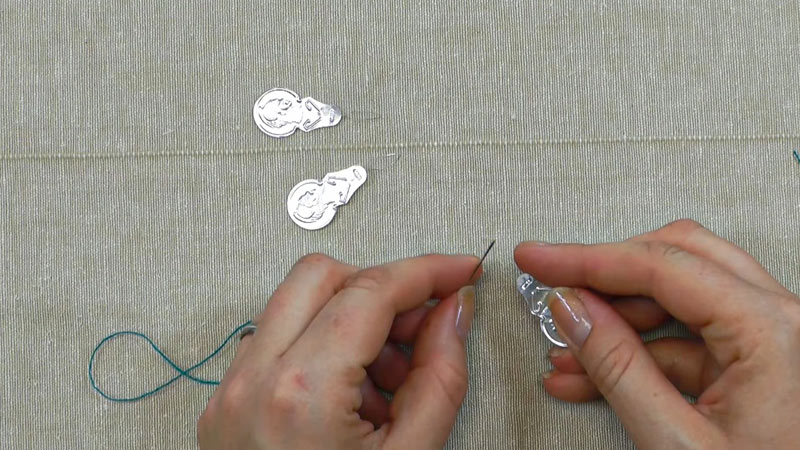
One of the easiest ways to thread an embroidery needle is to use a needle threader. Follow the steps mentioned earlier for using a hand-held needle threader.
This tool works well for embroidery needles, which often have small eyes.
Thread Looper Technique
Cut your embroidery floss to the desired length, usually around 18-24 inches. Fold the floss in half so that both ends meet.
Take the folded end and insert it through the eye of the embroidery needle, creating a loop.
Hold the looped end between your thumb and forefinger, and then insert the two loose ends of the floss through the loop.
Gently pull the looped end back through the eye, bringing the loose ends with it. This creates a slipknot, securing the thread in the needle’s eye.
Wet the Thread
Moisten the tip of the embroidery floss slightly with your tongue or a damp cloth. This can help stiffen the fibers and make them easier to thread through the needle’s eye.
Use a Single Strand
If you’re using multiple strands of embroidery floss, try separating a single strand from the bundle and thread it through the needle. Single strands are thinner and easier to work with.
Good Lighting and Magnification
Ensure you have adequate lighting and, if needed, use a magnifying glass to clearly see the eye of the needle and the thread.
Practice Patience
Threading an embroidery needle can be fiddly, so take your time and be patient. If you get frustrated, it’s okay to step away for a moment and then return to the task.
Remember that practice makes perfect. With time and experience, you’ll become more skilled at threading embroidery needles quickly and accurately.
FAQs
How Does an Automatic Needle Threader on a Sewing Machine Work?
An automatic needle threader on a sewing machine typically consists of a small mechanism that aligns the thread with the needle’s eye.
When engaged, it pushes the thread through the eye, making threading easier and faster.
Can I Use a Needle Threader on Any Sewing Machine?
Needle threaders, whether automatic or hand-held, are generally compatible with most sewing machines.
However, the availability and type of needle threader may vary depending on the machine’s make and model.
What Should I Do if My Sewing Machine’s Needle Threader Isn’t Working?
If your automatic needle threader isn’t working, check your sewing machine’s manual for troubleshooting tips.
Common issues may include a bent or misaligned needle, thread tension problems, or a malfunctioning threader mechanism.
Can I Use a Hand-Held Needle Threader on a Sewing Machine Needle?
Hand-held needle threaders are primarily designed for hand-sewing needles and may not work well with sewing machine needles due to size differences.
It’s best to use the built-in automatic needle threader on your sewing machine for this purpose.
Are There Any Tips for Using a Needle Threader Effectively on a Sewing Machine?
To use a needle threader on a sewing machine effectively, ensure the needle is at its highest position, engage the threader gently, and hold the thread taut as it’s pulled through.
Be patient and follow your machine’s specific instructions for the best results.
Conclusion
Mastering the needle threader on your sewing machine is a game-changer for any sewing enthusiast.
It simplifies the often tedious task of threading the needle, allowing you to focus on your creative projects without the frustration of struggling with fine threads and small needle eyes.
Remember, practice makes perfect, and as you become more familiar with your sewing machine’s needle threader, you’ll find yourself threading needles effortlessly in no time.
Whether you’re working on intricate embroidery, quilting, or simple repairs, this skill will prove invaluable.
So, don’t shy away from tackling those sewing projects you’ve been dreaming of. Armed with the knowledge of how to use a needle threader, you can confidently take on any stitching task, knowing that your sewing machine is your trusty partner in creativity.
Leave a Reply